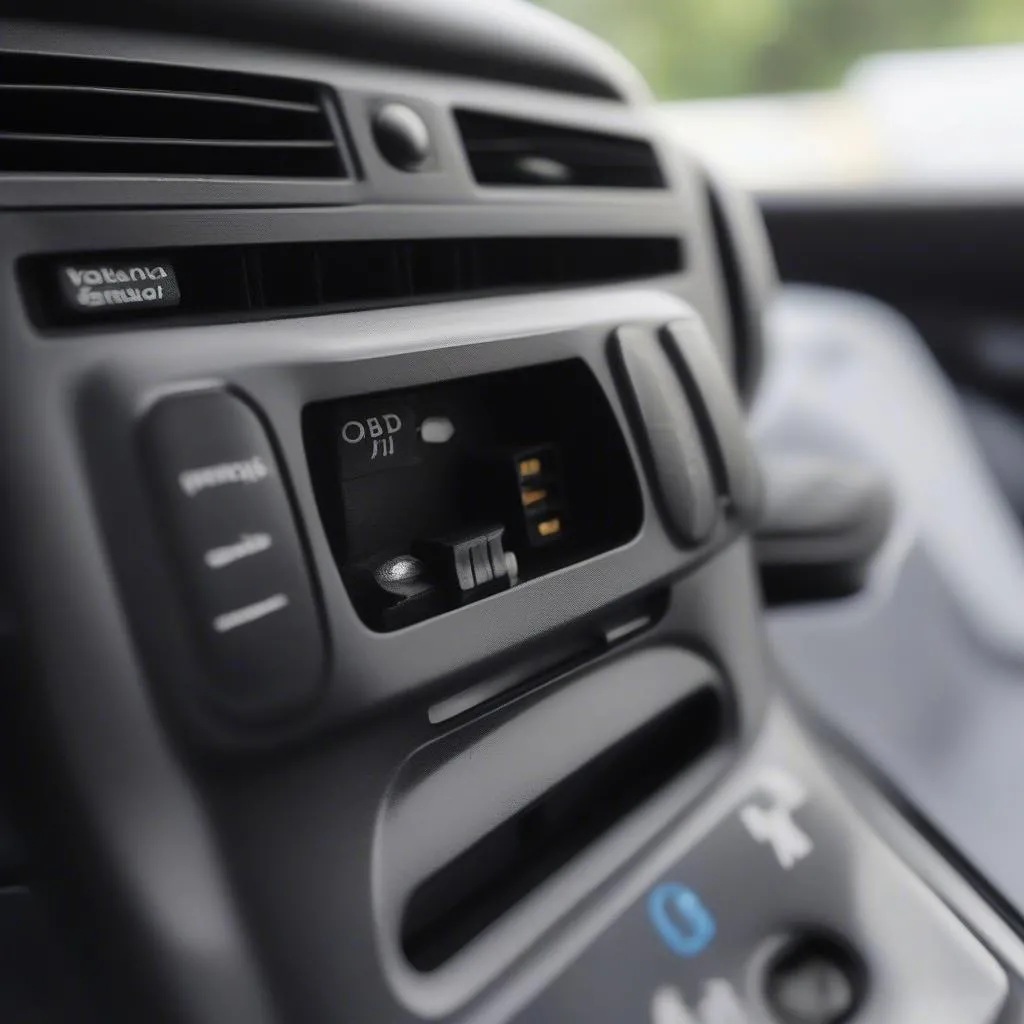Have you ever been driving down a California highway, maybe cruising down Highway 1 with the Pacific Ocean breeze in your hair, when suddenly your check engine light pops on? It’s a sinking feeling, right? You start thinking, “What’s wrong? How much is this going to cost me?” Well, before you panic and rush to the nearest mechanic in San Francisco, a Cen-Tech scan tool might be your new best friend.
But, like any good friend, you need to understand how to communicate with it. In this article, we’re diving deep into the world of Cen-Tech scan tools and teaching you how to decipher those cryptic error codes like a pro.
Understanding the Language of Your Car
Every modern vehicle speaks a digital language, and your Cen-Tech scan tool acts as your translator. It plugs into your car’s OBD-II port, typically found under the dashboard on the driver’s side, and retrieves Diagnostic Trouble Codes (DTCs). Think of these codes as your car’s way of saying, “Hey, something’s not quite right here.”
Why Reading Codes Matters
Knowing how to read these codes can be incredibly empowering:
- Early Detection: Identify potential issues early on, potentially saving you time, money, and stress down the line.
- DIY Repairs: For the mechanically inclined, understanding the codes can allow you to diagnose and potentially fix the issue yourself.
- Informed Decisions: Even if you’re not a gearhead, knowing the code gives you valuable information when discussing the problem with a mechanic. No more going in blind!
Deciphering the Cen-Tech Code
Now, let’s get to the heart of the matter – how to actually read those codes on your Cen-Tech scan tool. Here’s a step-by-step guide:
-
Connect and Power Up: Connect the scan tool to your car’s OBD-II port and turn the ignition to the “on” position (don’t start the engine).
-
Access the Codes: Navigate through the scan tool’s menu. The exact process may vary depending on the model, but you’ll be looking for an option like “Read Codes,” “Retrieve DTCs,” or something similar.
-
The Code Breakdown: Once retrieved, the codes will usually appear in a format like “P0301” or “U0123”. Let’s break down what this means:
-
First Character:
- P: Powertrain (engine, transmission, emissions)
- B: Body (airbags, power seats, etc.)
- C: Chassis (ABS, steering, etc.)
- U: Network & Communication (modules, wiring, etc.)
-
Second Character:
- 0: Standardized code (set by the Society of Automotive Engineers – SAE)
- 1: Manufacturer-specific code
-
Third Character: Indicates the system affected (e.g., 0 for Fuel and Air Metering, 3 for Ignition System, etc.)
-
Last Two Characters: These specify the specific fault within that system.
-
-
Interpreting the Code: Now comes the detective work. You can usually find a description of each code within the scan tool’s manual. Alternatively, numerous online resources provide comprehensive DTC databases.
Example: Let’s say your Cen-Tech scan tool displays the code “P0301.” This indicates a “Powertrain” code, standardized by the SAE, related to the “Ignition System or Misfire,” specifically pointing to a “Cylinder 1 Misfire.”
 OBD-II Port
OBD-II Port
Common Questions and Concerns
“My scan tool says ‘Pending Codes.’ What does that mean?”
Pending codes are like early warnings. They indicate a potential issue that the car’s computer has detected but hasn’t fully confirmed yet. It might be intermittent or require certain driving conditions to trigger a full-fledged code.
“Do I need to clear the codes after fixing the problem?”
Yes, it’s generally a good practice to clear the codes once you’ve addressed the underlying issue. This allows your car’s computer to reset and start fresh. However, keep in mind that clearing codes might temporarily affect your car’s performance until it relearns certain parameters.
Beyond the Codes: Tips and Tricks
- Consult Your Manual: Your vehicle’s owner’s manual is a goldmine of information, often containing a section dedicated to understanding warning lights and their associated codes.
- Take Notes: When troubleshooting, it’s helpful to jot down all retrieved codes, freeze frame data (a snapshot of conditions when the code was triggered), and any observations you make about your car’s behavior. This information can be invaluable when diagnosing the problem.
- Don’t Panic: Seeing a code doesn’t always mean a catastrophic engine failure. Sometimes, it could be a simple fix like a loose gas cap or a faulty sensor.
Still Feeling Stuck? We’re Here to Help!
Diagnosing car problems can feel daunting, but remember, you’re not alone! We offer expert assistance with all your automotive diagnostic needs. Whether you need help interpreting those pesky codes, require guidance on using your Cen-Tech scan tool effectively, or want a professional opinion on your car’s health, our team of automotive experts is just a message away.
Contact us on WhatsApp at +84767531508 for 24/7 support. We’re always happy to help you get back on the road with confidence!
Keep Exploring
Looking for more in-depth information on car diagnostics, repair tips, or product reviews? Check out our other articles on Diag XCar:
- Understanding Your Car’s Electrical System
- Top 5 Scan Tools for DIY Mechanics
- Common Car Problems and Their Solutions
 Mechanic Using Scan Tool
Mechanic Using Scan Tool
We’re passionate about empowering car owners with the knowledge and tools they need to keep their vehicles running smoothly. Drive safe!


